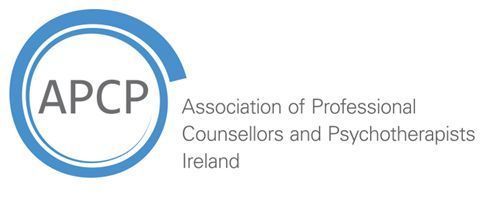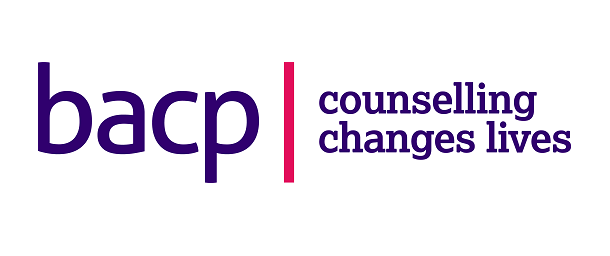What Is PTSD?
PTSD can be difficult to explain to someone who has never experienced it.

Sadly, many of us will experience trauma at some point in our lives. During and after a traumatic experience it is common to feel shocked, scared, numb, guilty, ashamed, angry, or vulnerable. With time most people recover from their experiences without needing professional help. However, for a significant proportion of people the effects of trauma last for much longer and they develop a condition called post-traumatic stress disorder (PTSD). People with PTSD experience strong unwanted memories of their trauma, to the point where it can feel as though the trauma is happening again right now in the present. This feels terrifying, and as a result those with PTSD often feel on-edge and on the lookout for danger. It is thought that between 3 and 5 people out of every 100 will experience PTSD every year.
What is trauma?
Many of us will experience trauma at some point in our lives – an experience which is overwhelming, threatening, frightening, or out of our control. Common traumas include being in an accident, such as a road traffic accident, or being in a life-threatening situation,
What is post-traumatic stress disorder (PTSD)?
It is normal to be affected by traumatic experiences. Victims of trauma might feel shocked, scared, guilty, ashamed, angry, or vulnerable. However, in a significant proportion of people the effects of trauma may develop into post-traumatic stress disorder (PTSD). Symptoms of PTSD are split into groups:
Re-experiencing symptoms.
Re-experiencing memories of the trauma means that memories of the event(s) play over and over in your mind. These memories can come back as ‘flashbacks’ during the day or as nightmares at night. The memories can be re-experienced in any of your five senses – you might see images of what happened, but may also experience sounds, smells, tastes, or body sensations associated with the trauma. Emotions from the trauma can also be re-experienced and it might feel as though the events are happening again. Re-experiencing symptoms include:
- Upsetting memories of the event intruding into your mind.
- Having nightmares about the event.
- Feeling physical reactions in your body when you are reminded of the event.
Arousal symptoms.
It is common to be ‘on edge’ or ‘on guard’ following a trauma. You might find it very difficult to relax or find that your sleep is affected.
Arousal symptoms include:
- Always looking out for danger (hypervigilance).
- Feeling ‘on edge’ or easily startled.
- Difficulty falling or staying asleep.
- Problems concentrating.
Avoidance symptoms.
A normal human way of dealing with physical or emotional pain is to avoid it, or to distract ourselves. You might try to avoid any people, places, or any other reminders of your trauma. You might try very hard to distract yourself in order to avoid thinking about what happened. Avoidance symptoms include:
- Avoiding reminders of the trauma.
- Trying not to talk or think about what happened.
- Feeling ‘numb’ or like you have no feelings.
Negative thoughts and mood.
Trauma has a powerful effect on how we think. You might blame yourself for what happened, even if it was not your fault. Or you might replay parts of the trauma and think “what if …?” or “if only …”. Many people with PTSD also experience depression. Negative thoughts and mood about the trauma might include:
- Negative thoughts about yourself.
- A sense of guilt about what happened.
- Feeling depressed or withdrawn.
- Feeling that no-one can be trusted.
We can separate the effects of PTSD into thoughts (and images), feelings, and behaviors.
What might go through your mind
- Intrusive memories (flashbacks) of the trauma
- Thoughts that the trauma is happening again right now
- Thoughts that what happened was your fault or that you could have prevented it
- Thoughts that you are going mad
- Images in your mind of what has happened, or what might happen
How you might feel
- Scared
- Angry
- Terrified
- Humiliated
- Ashamed
- Disgusted
- Any emotions that you experienced at the time of the trauma
- Dissociation (feeling separate or detached from what is happening)
- Feelings in your body that are the same as those you experienced during the trauma
How you might act
- Avoid people or places that remind you of what happened
- Avoid thinking or talking about what happened
- Try to push memories away, or try to forget what happened
- Avoid going to sleep for fear of nightmares
- Use alcohol or drugs to numb yourself
- Keep yourself busy
What causes PTSD?
PTSD is unique in that its main cause is exposure to traumatic, life-threatening, or frightening events. One puzzle is that not everybody who experiences a trauma goes on to develop PTSD so there must be factors that make some people more likely to develop PTSD after a traumatic experience.
These include:
How much social support you have.
Psychologists have found that people with higher levels of social support are less likely to develop PTSD following a trauma. If you have people to talk to, with whom you can make sense of an event, it can act as a ‘protective shield’ from the effects of the trauma.
Genetic and biological factors.
There is some evidence that genetic and biological factors can influence who develops PTSD following a trauma. For example, the size of part of the brain called the hippocampus is thought to influence whether memories of your trauma are experienced in problematic ways.
The way your brain processes memories of your trauma.
Memories in PTSD are different from ‘normal’ memories, they are much more vivid and intense, and have the ability to ‘trick’ you into thinking that the trauma is happening again – even many years after the trauma is over. Scientists think that there are differences in the way that your brain encodes, stores, and retrieves trauma memories which mean that some people develop PTSD.
What keeps PTSD going?
Cognitive Behavioral Therapy (CBT) is always very interested in what keeps a problem going. This is because if we can work out what keeps a problem going we can treat the problem by intervening to interrupt this maintenance cycle. Psychologists Anke Ehlers and David Clark identified three processes which explain why people with PTSD feel a current sense of threat even though the trauma has already happened.
These include:
- Unprocessed memories.
- Beliefs about trauma and its consequences.
- Coping strategies including avoidance.
- Unprocessed memories
Memories in PTSD have some unique properties. Psychologists think that they are stored differently by the brain. This explains why memories in PTSD are:
- easily triggered by things around you,
- are intrusive (pop into your mind unexpectedly),
- are especially detailed and vivid,
- and can feel as though the events are happening right now in the present moment.
Until your brain has completed the job of ‘processing’ your trauma memories you might be vulnerable to these re-experiencing symptoms.
Beliefs about your trauma and its consequences
CBT says that the way we think (our beliefs) and the way we act affect the way we feel. Strong (traumatic) events can produce correspondingly strong beliefs, sadly not always helpful ones. Psychologists increasingly believe that one of the most important jobs of therapy is working with the meaning their client has made of their trauma. Some examples are given below of the meanings of their trauma expressed by some real clients at the start and end of their therapy:
Coping strategies including avoidance
Avoidance is natural but that doesn’t mean that it is helpful. At the core of PTSD is a feeling of threat. Your ways of coping with the threat might include avoiding perceived dangers, or doing things that help you to cope in the short-term but which may be harmful in the long-term. Unhelpful coping strategies that prevent recovery from PTSD include:
- Avoiding memories of the trauma (which means the memories stay ‘unprocessed’).
- Avoiding reminders of the trauma.
- Using alcohol or other substances to block out memories or feelings.
- Not talking about what happened.
Understanding these mechanisms tells us what we need to do to treat PTSD. These treatments all include ingredients of:
Exposure to memories.
Trauma therapists sometimes call this ‘trauma memory processing’. Almost all evidence-based treatments for PTSD include at least some talking about (or facing) what happened to you, although they can differ a bit in terms of how this is done. Psychologists think that exposure may allow “aspects of the trauma to become clearer, new pieces of the puzzle may emerge, and new perspectives may be gained”.
Work to change meanings.
This means examining how you made sense of what happened to you and seeing whether these perspectives are fair or helpful.
Reducing unhelpful coping strategies.
Reducing avoidance helps you to challenge unhelpful beliefs and allows you to begin reclaiming your life.
Treatments for PTSD
Psychological treatments for PTSD which have a good research support include:
- Cognitive Behavioral Therapy (CBT) / Trauma-focused CBT
- Eye Movement Desensitization and Reprocessing (EMDR)
- Cognitive Processing Therapy (CPT)
- Prolonged Exposure (PE)
- Narrative Exposure Therapy (NET)
There is emerging evidence that the way these therapies work is by changing the way we think about the trauma and its aftermath. Research into trauma-focused therapies show that if we can change the meaning of the trauma we can change how you feel.
Medical treatments for PTSD
The UK National Institute of Health and Care Excellence (NICE) guidelines for post-traumatic stress disorder found that the was evidence that SSRIs and venlafaxine are effective in treating PTSD. However, they state that they are less effective than psychological treatments and should not be offered as a first-line treatment for PTSD. The NICE guideline also found some evidence that antipsychotic medication may be helpful as an adjunct to psychological therapy in some cases.
How can I overcome my PTSD?
Professional treatment for PTSD often (but not always) proceeds in stages:
Stabilization.
The first stage is about feeling ‘safe enough’ to begin therapy. Tasks may include learning about PTSD and learning grounding techniques to help you to feel more in control. This is something that you can do with a therapist or can begin to do on your own.
Making sense of your trauma.
The second stage is about making sense of what happened to you. This can involve talking about what happened and understanding how the events affected you. Tasks at this stage might include exposure to your trauma memories by talking about them, imagining them in your mind, or by writing about them.
Reclaiming
The third stage is about reclaiming your life. PTSD might have made you live a shadow of your former life. Once the major symptoms of PTSD are resolved your task is to claim back the life that you want to lead.
Depending on how severe your trauma was, and how strongly your PTSD affects you, you may want to speak to a therapist. However, there are lots of things that you can do for yourself that will help you to overcome PTSD.
These include:
- Understanding about PTSD
- Recognizing your triggers
- Using grounding to manage dissociation and stay in the moment
- Retraining your brain (discriminating triggers)
- Memory processing (by doing written exposure therapy)
Understanding about PTSD
An important first step in overcoming PTSD is to understand more about your condition. Many people find it reassuring to know that they are experiencing normal reactions to severe events.
Recognizing your triggers and flashbacks
Some people with PTSD feel as though unwanted memories and other symptoms appear ‘out of the blue’. This can make you feel out of control and can make you afraid to engage with your life. You will find it helpful to learn to recognize your triggers – things in the world that cause you to have strong feelings or unwanted memories.
Grounding exercises to manage flashbacks and dissociation, and to stay in the moment
The intrusive symptoms of PTSD act to take your mind away from the present moment: flashbacks and intrusive memories take you back to the past; worries take you to the future. It is normally the case that neither of these feels particularly safe. Grounding exercises are a great antidote. They are designed to help you to bring your attention back to the present moment, where you are safe.
Your brain is a learning machine, and it is always trying to help you to live safely. If you have been hurt by something your brain learns this and tries to warn you if you encounter anything similar in the future. Sometimes brains do this job too well – they set off an alarm even if we encounter something similar but not dangerous. Psychologists think that this happens in PTSD – your brain makes a mistake when it encounters reminders of your trauma, and then sets off your body’s alarm system making you feel panicky. Your alarm system has become oversensitive. The solution is to retrain your alarm system so that your brain can tell the difference between ‘dangerous’ and ‘not dangerous’. This is called ‘stimulus discrimination’ because you are retraining yourself to discriminate between things (stimuli) that are threatening and safe.
Memory processing (written exposure therapy)
Safe exposure to your trauma memories is a key component of treating your PTSD. One reason why psychological treatments for PTSD often emphasize exposure to trauma memories is because it may allow “aspects of the trauma to become clearer, new pieces of the puzzle may emerge, and new perspectives may be gained”. Approaching trauma memories is something that people with PTSD often choose to do with a therapist during their therapy. In face to face therapy for PTSD exposure to traumatic material is attempted in a variety of ways including: describing the traumatic events slowly and in detail (a process called ‘reliving’), drawing the traumatic events, revisiting locations associated with the trauma in person (called ‘site visits’) or using Google Earth (virtual site visits).
There is emerging evidence to suggest that some people find written exposure therapy helpful as an intervention. However, do be aware that if you are prone to dissociation then doing this too suddenly can trigger dissociative reactions.
Good reasons not to try written exposure therapy on your own include:
- Currently feeling suicidal;
- Current dependence on alcohol or drugs;
- Very severe dissociation.
In these cases face-to-face therapy is advised.






